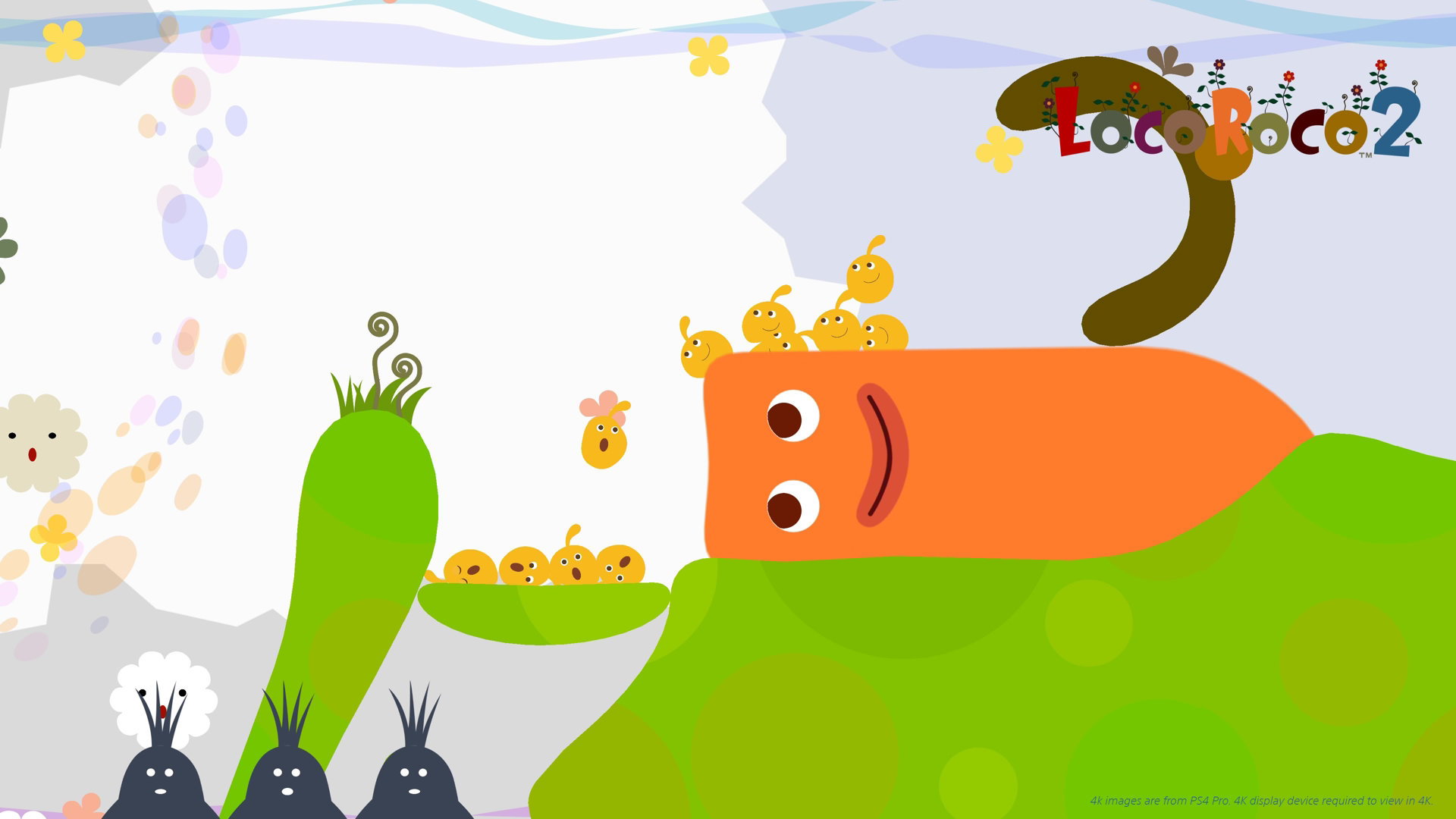Locoroco 2 is a platformer video game that is a sequel to the PlayStation game, Locoroco. Here is Ben Wilson’s take on the game.
Locoroco comes from a time when Sony’s lineup was a bit more playful. Among others like Patapon, LittleBigPlanet and ModNation Racers – many of their games resembled bedroom toy baskets until The Last of Us came along to begin a new trend of narrative experiences.
I never actually played any of the Locoroco games. I didn’t feel like I needed to. LittleBigPlanet was already occupying so much of the same space, and more immediately, I didn’t have a PSP.
Having played the original Locoroco is basically irrelevant to your playing the second. These are not games concerned with any narrative coherence. Whatever slim stories are given are simply there to frame the game’s comical concept.
Locoroco’s ‘thing’ is the creative way you get your blobs to move. As the game would put it; technically you don’t control them, you control the planet. Rotating either left or right slopes your locorocos that direction.
To the imagination this sounds like a neat idea. And it kind of is, at least ‘til you realise rotating the environment is almost functionally the same as controlling the gelatinous minions themselves. This essentially turns the game into a ‘pretty cool’ platformer, instead of the reversive one it wants to be.

This control scheme makes more sense once you remember the game was initially made for PSP – where rotating the environment itself would come much more naturally to a handheld device you could actually move.
The environment puzzles don’t usually make use of this flagship feature. Most of the time you’ll feel like you’re simply playing another platformer. The game also has a thing for ejecting you through Sonic-like tubes on a regular basis. Cinematically impressive as these segments may be, as I just implied, they’re completely non-interactive. Watching exhilarating stuff happen is fun – participating yourself is even better. But Locoroco 2 reserves these waterslide moments for itself.

So much of Locoroco’s identity is built from its kindergarten art style, and that’s not even the criticism it might sound like. The visuals bring to mind the peaceful simplicity of works like Samurai Jack. Ultimately the game is trying to be fun, and you’ll certainly get that impression from the youthfully Japanese style.
I have a high tolerance for sound. Particularly annoying sounds. I use to work at Chipmunks after all. The background screaming of children was just another part of the day. I don’t tend to notice nagging neighbourhood sounds anymore – but I couldn’t help but notice this game’s music. It was maddeningly annoying. A cacophony of high-pitched chanting and rhythmic bobbing to get your Teletubby memories going. A collection of tracks tailor-made to be as aurally annoying as possible.
Locoroco 2 works chiefly as an experiment in platforming, despite achieving little to differentiate itself functionally. It’s one of those games people typically call ‘delightful’ and ‘charming’, and I’d agree with those sentiments most of the way. Most of the way.

